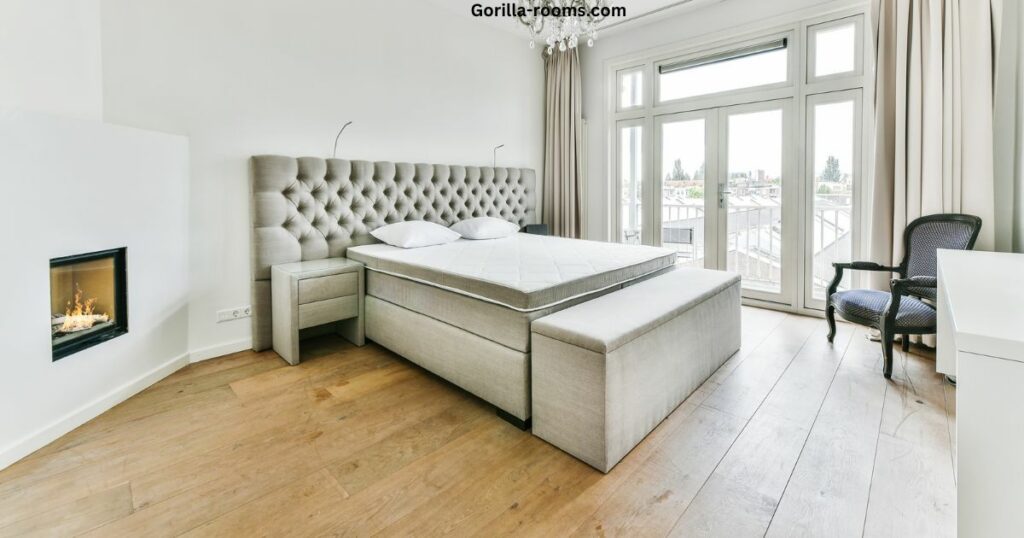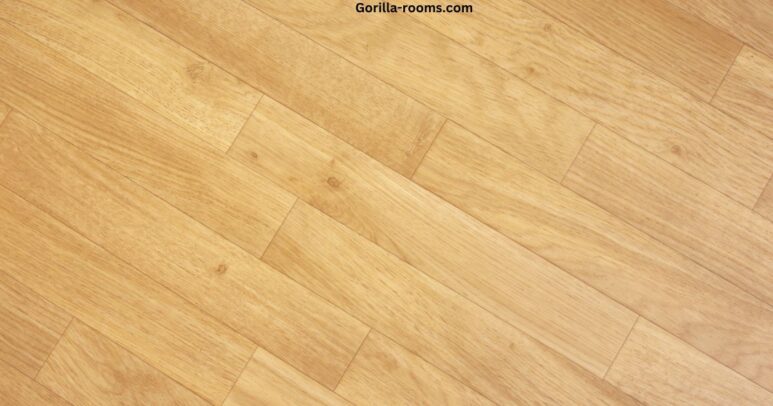Are you noticing bubbles and ridges on your vinyl plank flooring? Or are you experiencing discoloration or lifting of the floorboards at the edges?
If you have observed any of these issues on your vinyl plank floor, then the reason can be water moisture damage issues. However, vinyl flooring is waterproof.
But water can still penetrate or seep through it if exposed to water for a long time. So, a question arises: how can you remove water under vinyl flooring?
Well, you don’t need to worry about that because you are at the right place! We will discuss ways and reasons for moisture reaching underneath your flooring, how to detect the moisture, and how to prevent moisture from getting to your flooring.
So, don’t panic and give a read to this blog!
Is Vinyl Plank Flooring Water-Resistant?
The answer to this question is “yes.” Vinyl planks are made with polyvinyl chloride, also referred to as “PVC.” PVC resins are mixed with fungicide, stabilizer, and plasticizers.
Due to this feature, vinyl planks are not authentic wood; therefore, it doesn’t absorb liquid. They don’t even show any physical change if dipped in water for days.
That is why it is completely water-resistant! Vinyl plank flooring is also used in bathrooms and kitchens etc. Because of its water-resistant feature.
Both types of vinyl flooring, such as glue-down and click-lock, are waterproof. But water can still go underneath the flooring if the seams are not sealed properly.

It also causes mold to grow underneath vinyl planks. Molds are a serious threat to health. Water cannot penetrate through the click-lock system for Floating LVT flooring.
But if the edges that adjoin the walls are not properly sealed, then water can end up getting under your flooring. In glue down vinyl, too, water can seep through seams if they are not properly sealed.
The adhesive attaching the vinyl plank to the subfloor can also wash over time. Resulting in lifting along the edges of floorboards. If you live in a region where it snows during the winter season, then this problem can get worse.
Because when people enter the house, they carry snow with their shoes. This breaks down the adhesive sealant between adjoining planks when the snow melts. In this way, water seeps under the planks through open seams.
How To Detect Moisture Under Vinyl Plank Flooring?
When there is a significant or even less amount of moisture beneath your vinyl plank, you will observe some changes. Some are discussed below:
1- Lifting Of Floor
The first sign that you will see is the lifting of the floor due to moisture buildup underneath. Especially if the flooring is glued down, the adhesive starts deteriorating due to moisture build-up.
This lifts the plank upward and around the edges. Carefully observe the edges of the planks for signs of lifting.
2- Bubble Forming
Another sign that can detect moisture is bubbled forming in the middle of vinyl floorboards. Bubbles are not easily visible. So, you need to move your fingers around to check for bumps and mishaps.
3- Discoloration
The last sign of moisture buildup under vinyl flooring is discoloration or tarnishing. Similarly, cleaning the vinyl plank flooring is not a tough job, and any kind of stains can be removed.
But if you notice such stains and yarn isises that cannot be removed, you must check for moisture under your vinyl plank flooring.
Ways To Dry Water Under Vinyl Plank Flooring
Depending on how intense the water spill is, there are many ways to dry the water.
1- Plumbing
If your kitchen or bathroom vinyl plank flooring has moisture problems, you need to check for plumbing or leakage issues. If there is a sudden increase in your water bill, leakage can be the reason.
Another way of finding out leakage is Sharp ears!. If you hear dripping sound from your kitchen sink, bathtub, dishwasher, etc., then try to fix it. If the problem is with leakage, then you will be saved from the headache of pulling out your planks.
2- Other Underlying Issues
It will be foolish if you get busy solving the surface problem instead of the root problem. So, it is always a better option to check for any underlying issue.
One of the major reasons that cause moisture buildup is the material of the subfloor. If the vinyl flooring is directly installed above the concrete subfloor that was not properly dried, you will face moisture issues.
Thus, you will need to pull out the planks and let the subfloor dry completely.
3- Remove The Entire Vinyl Floor
You will need to remove the entire vinyl floor if the water damage is severe. It is easy to remove the click lock vinyl boards, and you can do it by yourself but glued down boards are comparatively difficult to remove because of the precision it needs.
You can use a floor scraper while removing the glued-down vinyl floor. You can also call an expert to do it for you if it seems to be too difficult.
4- Use A Mop:
Now, use a mop and bucket to get rid of all the water spilled on the subfloor. You should use a mop right after water is spilled, even if it is less (without removing the vinyl flooring)
Try to dry the water as soon as possible, Before it seeps through your floor. Do it as many times as required, and do not stop until the water is completely dried.
You need to make sure that your surface is clean from the water. Lastly, you can use vinyl safe cleaners if you want.
5- Turn On Your Heaters, Fans, And Dehumidifiers:
If there is still a little bit of moisture left even after mopping, then turn on your heaters, fans, and dehumidifiers to make sure that all the moisture evaporates.
If the moisture has seeped through the flooring, then remove the vinyl planks and let the subfloor dry to prevent mold invasion.
Open the doors and windows for natural evaporation of moisture. But if the air is more humid, let the electric appliances do their job.
How To Prevent Moisture Build-Up Under Vinyl Planks?
Nobody likes the headache of drying vinyl planks. It needs so much effort and can cause you a loss of extra pennies. As it is said, “prevention is better than cure,” so, down below, we are discussing some ways to prevent this issue from happening.
Avoid Exposing Planks To Water
If the planks are placed in the kitchen or bathroom where you have your dishwasher or washing machine placed that overflows, then try to get a hold of overflowing water as soon as possible.
The continuous water exposure will especially deteriorate glued-down planks as it deteriorates the adhesion between two planks, and water seeps through it easily.
Let The Concrete Subfloor Dry Well
If you decide to install vinyl planks on top of a concrete subfloor, then make sure that the concrete subfloor is dried completely! Else it will cause you many problems.
You can grab a moisture detecting kit and use it to check the moisture levels. For installing vinyl flooring, the cement subfloor moisture content should be less than 2.5 CM.
If you don’t have the kit, then you can put a mat on top of your subfloor and check it after a day or two for any moisture signs. If you have signs of moistness over the mat, then do not install vinyl plank because the subfloor isn’t ready yet.
Try Using A Moisture Barrier
If none of the above ideas seems to work, then add a floor moisture barrier to your vinyl plank flooring. Adding a floor underlayment also makes it comfortable to walk on the floor.
If you are installing vinyl plank on a wooden subfloor or tiles, you can skip using a moisture barrier. You also need to consider moisture barriers if they were already installed with vinyl planks.
Conclusion
Too much exposure to moisture can destroy your vinyl flooring. You must ensure to block all of the ways through which water can get under your flooring.
Sometimes there is a problem with underneath water pipes that brings moisture. While figuring out the main problem, you need to keep in mind all of the reasons through which water gets under the flooring.
Many times, people remove the planks and later find out that the problem was with leakage from their kitchen sink. Although, finding water under your vinyl plank flooring can be a real headache.
But instead of worrying and panicking, you need to find the root problem rather than solve surface-level problems. Try to get in touch with an expert if the problem is too significant.
This will save you from future headaches regarding water getting under your vinyl plank flooring. Do check for warranties for moisture damage if provided by the manufacturer.
Related Posts:
- How To Clean Pet Urine Stains From Vinyl Floor
- Vinyl Plank Flooring VS Ceramic Tile
- How To Clean Vinyl Floors With Vinegar?

